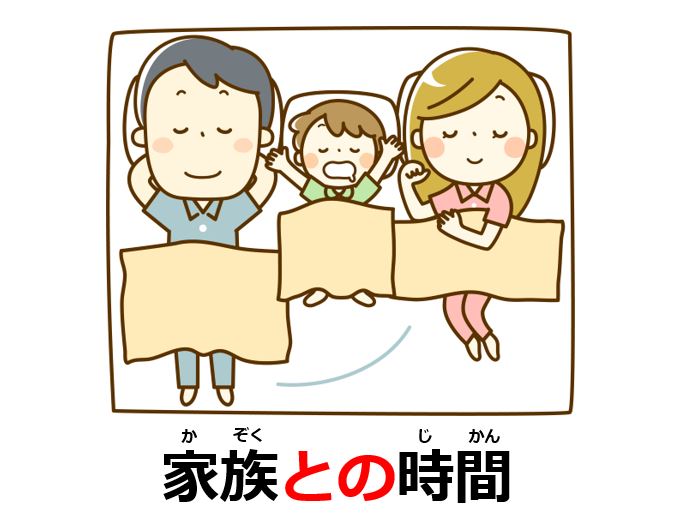
This particle is used to express a strong conviction about something. Last but not least, the よ (yo) particle is also attached to the end of the sentence. It’s great weather today, isn’t it? よ (yo) It can also be used as a rhetorical device, like saying “it’s a rainy day, isn’t it?” It can often translate to adding a question tag, asking for confirmation from the listener. Often used at the end of sentences, the ね (ne) particle is similar to a rising intonation. Hachi-ji kara juu-hachi-ji made kaimono ni ikimashita. This is usually used to show the extent of an action or period of time. In contrast to the previous particle, we have the まで (made) particle. Let’s look at the basic format for this particle: If the particle is used to talk about time, it translates to “since” or “after”. This particle indicates the source of an object or action. It can be translated to “it belongs to.”. It's like the apostrophe-s (‘s) in English. The の (no) particle indicates possession. In Japan, there are big cities like Tokyo and Osaka, etc. Nihon no toshi niwa toukyou ya oosaka ga arimasu. The や (ya) particle is used similar to “and”, but it translates better to “such things as…” Similar to the English word “and”, the と (to) particle connects two nouns together, making a single noun. Here’s a general format of this particle: This particle replaces other particles like ga, wa or wo when used.

The も (mo) particle is used just like in English, to refer to something previously said that’s also true now. This next particle is used like the English word “too” or “also”. Let’s look at the format for this particle: It’s the opposite of へ, as it emphasises location rather than direction. The で (de) particle is another location-related particle. This is the general format of the particle: This particle is often specifically for directions, whereas the other one can be used for various types of directional usage. The difference is that へ emphasises on the direction instead of the arrival. This next particle, the へ (e/he) particle, is pretty similar to に. It can also be used when you’re talking about the direction of something, like receiving something from others. The particle often follows a moving verb only. The に (ni) particle indicates a place or the direction something is moving towards. Most of the time, it follows a noun or a noun phrase. This particle is used to signal the object of the sentence. The next common particle is the を (wo) particle. It’s also used when you’re first introducing the subject. You use the “ga” particle to emphasise something or to distinguish it from the rest. Some people get confused as to which to use. The が (ga) particle acts about the same way as our previous one. This is a general format of this particle: The topic of the sentence can be anything - it could be the subject, object, or even a verb. This particle follows the topic of the sentence, making this particle the topic marking particle. This is the first one that Japanese learners will learn. Let’s take a look at some of the most common and important ones.įirst off, we’ll look at は (wa/ha), which is the most common one out of all Japanese particles. Long story short, particles are pretty crucial in the Japanese language. However, it can be unclear what you’re trying to say if you don’t use particles, since the sentence structure can be changed around quite often in Japanese.

Sometimes, in informal speech, particles are often dropped. This means that particles have to be placed after the word they’re relating to directly. Particles are also known as “post positions”. It can vary from differentiating a subject and an object, showing direction of action or motion, to expressing possessive. Each particle serves a different function.

In short, Japanese particles are small words which are used in between other words to show the relations of the sentence. Read on for a brief yet detailed explanation on what Japanese particles are and the various ones we use day-to-day, along with its usage! What are particles? Now, you’ve come to the right place to get a bit of clarification on the matter. Don’t be scared off by the number of particles the language has - it’s actually not that confusing at all! We don’t have those in the English language, so it might be a bit difficult to fully grasp its usage when you’re first starting out.

The first thing you’d notice when learning Japanese is the particles. Are you starting to learn Japanese? That’s fantastic news! Learning a new language is always rewarding and beneficial, and the Japanese language is just as rich as its culture.


 0 kommentar(er)
0 kommentar(er)
